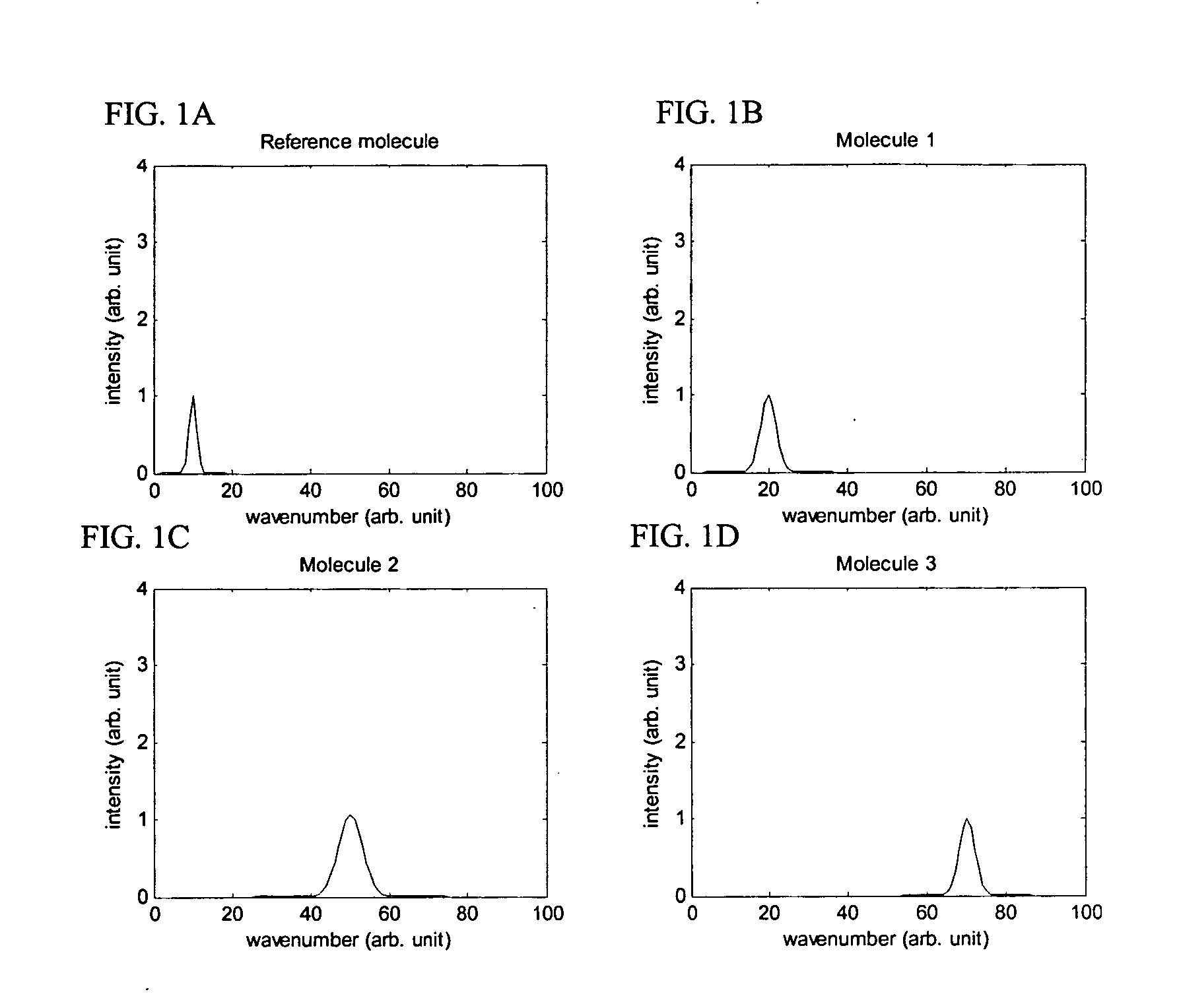Methods and compositions for nucleic acid detection and sequence analysis
a nucleic acid and sequence analysis technology, applied in the field of data encoding, can solve the problems of limited number of signal molecules available, limited number of available label molecules, and difficulty in detecting large numbers of label molecules
- Summary
- Abstract
- Description
- Claims
- Application Information
AI Technical Summary
Benefits of technology
Problems solved by technology
Method used
Image
Examples
example 1
Use of Population of Labeled Oligonucleotide Probes to Identify a Target Nucleic Acid
[0159] This example illustrates making and using the encoding method and population of labeled oligonucleotide probes disclosed herein, to identify an 8 nucleotide target sequence in a target nucleic acid. It is well known in the field, that dye molecules containing N-hydroxysuccinimidyl ester group, such as 7-diethylaminocoumarin-3-carboxylic acid, succinimidyl ester (DEAC), Fluorescein-5-EX, succinimidyl ester (FITC), Cy3, Cy3.5, Cy5, Cy5.5, Cy7, Rhodamine Green (RG), 6-carboxytetramethylrhodamine, succinimidyl ester (6-TAMRA), 5-(and-6)-carboxyrhodamine 6G,succinimidyl ester (5(6)-CR6G), Texas Red(R)-X, succinimidyl ester (TxR), can be attached to an amine group of a nucleotide by known chemistry (Randolph and Waggoner, Nucleic Acid Research, 1997). A commonly used nucleotide for labeling is the reactive amine derivative of dUTP, 5-(3-Aminoallyl)-2′-deoxyuridine 5′-triphosphate, which can be eas...
PUM
| Property | Measurement | Unit |
|---|---|---|
| Length | aaaaa | aaaaa |
| Composition | aaaaa | aaaaa |
| Fluorescence | aaaaa | aaaaa |
Abstract
Description
Claims
Application Information
 Login to View More
Login to View More - R&D
- Intellectual Property
- Life Sciences
- Materials
- Tech Scout
- Unparalleled Data Quality
- Higher Quality Content
- 60% Fewer Hallucinations
Browse by: Latest US Patents, China's latest patents, Technical Efficacy Thesaurus, Application Domain, Technology Topic, Popular Technical Reports.
© 2025 PatSnap. All rights reserved.Legal|Privacy policy|Modern Slavery Act Transparency Statement|Sitemap|About US| Contact US: help@patsnap.com



